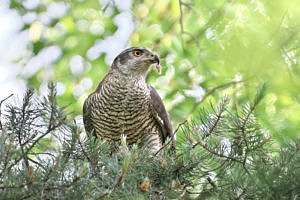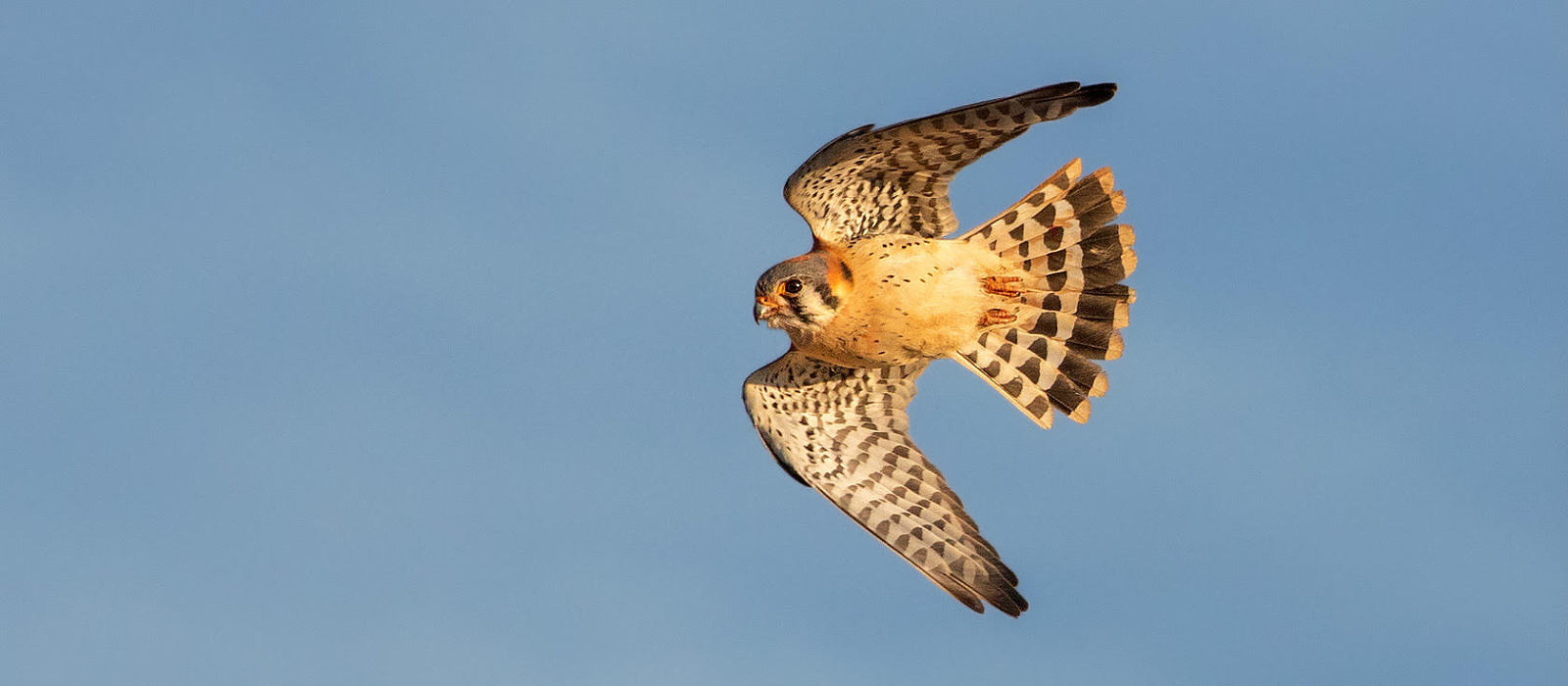Wanted: Your Raptor Sightings
The Harris Center is expanding our monitoring efforts for three species of raptors, and we need your help! This spring and summer, we are especially seeking reports of American Kestrel and Northern Goshawk activity from across the Monadnock Region, with the ultimate goal of better understanding and conserving these fascinating — and declining — species.
Broad-winged Hawk
Breeding season is now underway for Broad-winged Hawks, three of which were banded and outfitted with transmitters in 2021 through a collaboration with Hawk Mountain Sanctuary. In just one year, we’ve learned so much about the migration and winter ecology of these individuals, and this summer, we hope to double our sample size by tagging three more adult Broad-wings. If you have birding experience and would like to volunteer to search for or monitor Broad-winged Hawk nests in the SuperSanctuary this May and June, please contact Bird Conservation Director Phil Brown by email.
American Kestrel
The American Kestrel is one of our smallest local raptors and a species of special concern in New Hampshire. Although Kestrels are in decline, the installation, maintenance, and monitoring of nest boxes in appropriate grassland habitat can help bolster breeding populations. This year, the Harris Center is launching a new kestrel monitoring initiative, with an aim toward informing future nest box placement. If you know of nesting kestrels in the Monadnock Region or are interested in hosting a nest box, we want to hear about it! You can report kestrel sightings to eBird or to Bird Conservation Director Phil Brown by email.
Northern Goshawk

A Northern Goshawk, mid-meal.
(photo © Aleksey Gulinavov via the Flickr Creative Commons)
Northern Goshawks are found in heavily forested areas from Canada south to the mid-Atlantic states. Although they are a regular breeding bird in much of northern New England, their presence can be difficult to detect. Research in states to our south and west shows declines in this species, and significant declines have also been observed at migration watch sites across North America — including our own Pack Monadnock Raptor Observatory. New England’s forests may help unlock some of the mysteries surrounding the threats to this elusive species.
As with kestrels, the Harris Center aims to collect baseline information about goshawk territories in the Monadnock Region during the 2022 breeding season. Our goals are to: (1) determine the locations of existing goshawk territories (with follow-up efforts to locate active nests, where possible); (2) document the timing of breeding milestones such as incubation, nestlings, and fledging; and (3) continue nest monitoring in future years, where possible.
Northern Goshawks are the largest of the Accipiters, best known for their feisty disposition during breeding season. Reports of adults defending their territories – especially when they have chicks in May and June – are one of the best ways to determine a breeding presence. If you think you’ve come across a Goshawk territory, please let us know by emailing Bird Conservation Director Phil Brown.
Contact Us
For more information on the Harris Center’s raptor monitoring work, please contact Bird Conservation Director Phil Brown by email.


